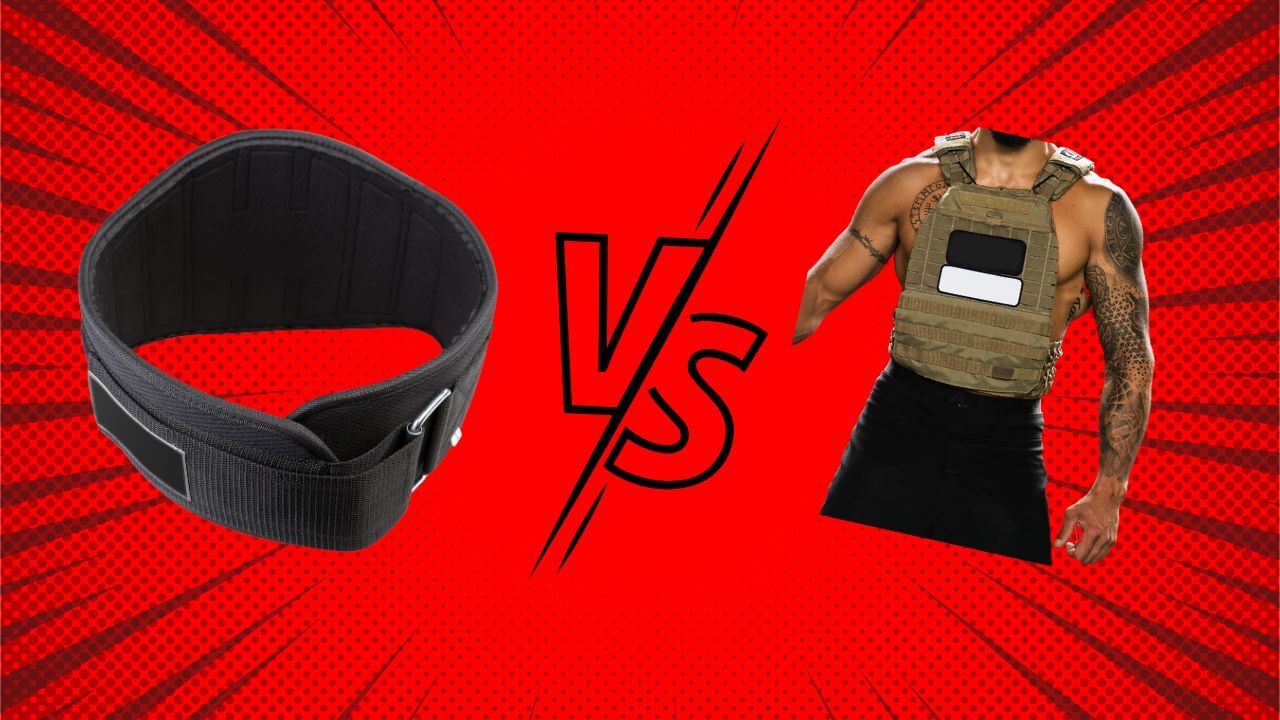What is weighted calisthenics?
Weighted calisthenics, also known as weighted bodyweight exercises, refers to a form of strength training where traditional bodyweight exercises are enhanced by the addition of external resistance. The external resistance can come in the form of weighted vests, weight belts, dumbbells, plates, kettlebells, or other types of weights. The primary objective of weighted calisthenics is to increase the challenge and intensity of bodyweight movements, leading to greater muscle activation, strength gains, and muscle hypertrophy.
In traditional calisthenics, exercises like push-ups, pull-ups, dips, squats, and lunges rely solely on the resistance provided by an individual's body weight. It’s possible to increase resistance without adding weights for example by adjusting the body’s leverage or using resistance bands. However, in weighted calisthenics, additional weight is strategically added to these movements to create progressive overload and stimulate further muscle adaptation.
As a reminder, of why progressive overload is essential for improving performance: by consistently challenging the muscles beyond their current capacity, the body adapts to this stress by recruiting more muscle fibers, stimulating protein synthesis, and enhancing neuromuscular coordination. Over time, this adaptive response leads to muscle hypertrophy and increased strength, as the muscles become better equipped to handle higher loads. Without progressive overload, the body would not be incentivized to grow and develop, making it a fundamental principle in promoting significant gains in both muscle mass and strength.
The good thing about weighted calisthenics is the ability to micro-adjust the resistance, as a result, it can be adapted to suit athletes of various fitness levels. It is recommended to incorporate weighted calisthenics into a workout plan as soon as possible as it can speed up progress and lead to enhanced overall performance. The main prerequisites are strength and stability as well as the ability to execute the target movements in a perfect form without external resistance.
Weight belt aka dip belt for pull-ups and dips
Weight belt / Dip belt
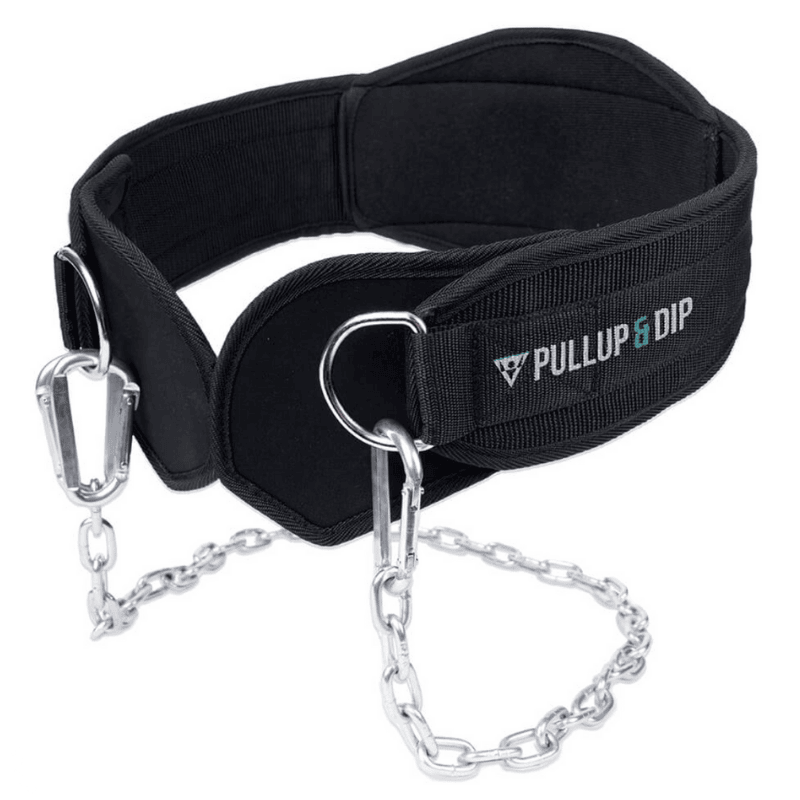
*alternative buying options:
- PULLUP&DIP (DE) use code CALIS10 for 10% off
- GORNATION (UK&EU) use code CS10 for 10% off
- Essential for weighted pull-ups and dips
- High quality durable fabric with padded design
- Includes 3 carabiners and a unique flap for better fit
- Stainless steel chain with high load bearing
A weight belt, also known as a weightlifting belt, is a supportive piece of equipment designed to be worn around the waist during strength training exercises. In powerlifting its primary purpose is to provide additional stability and support to the core and lower back, allowing individuals to lift heavier loads and improve their performance in exercises like squats, deadlifts, and overhead presses.
In calisthenics, a weight belt or “dip belt” with the addition of weight can effectively add external resistance to bodyweight movements such as pull-ups and dips. By attaching weight plates or kettlebells to the belt, athletes can challenge their muscles further to promote strength gains, making it a great tool for progressive overload training in bodyweight exercises. Proper weight belt use involves ensuring a snug yet comfortable fit and engaging the core muscles during exercises to prevent the weight from swinging.
The pros and cons of a weight belt
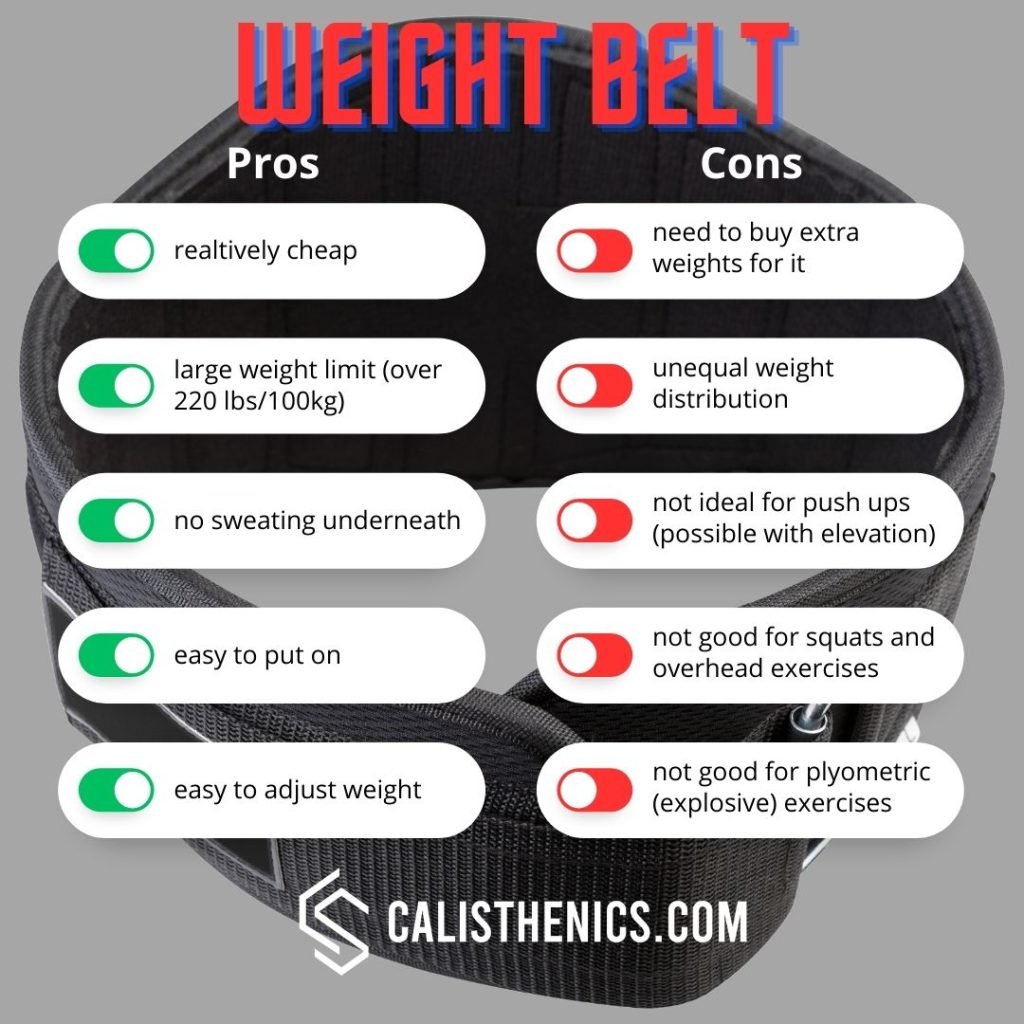
Benefits of a weight belt
- Ease of Use: Weight belts are quick and easy to put on and take off, allowing for efficient transitions between exercises.
- Ideal for Pull-Ups and Dips: Weight belts excel in vertical pull and push exercises such as pull-ups and dips. Here the added weight is centered around the waist and gravity is helping it keep in place.
- Adjustable Weight: With weight belts, weight adjustment is straightforward. It allows incremental adjustment by adding or removing small or large plates or kettlebells.
- High Weight Limit: Weight belts typically have a substantial weight limit, enabling athletes to exceed loads of over 220 lbs/100 kg in added resistance.
- Minimal Sweating: Compared to weighted vests, weight belts do not cover large areas of the body, this way it’s the ideal tool for hot summer days.
- Cost-Effective: Weight belts themselves are relatively inexpensive; however, additional weights are required, which can add to the overall cost if they are not already part of your home gym.
Disadvantages of a weight belt:
- Unequal Weight Distribution: One notable drawback of weight belts is that they can put pressure on the soft tissues and create discomfort during exercise. This however can be mastered with experience.
- Suboptimal for Push-Ups: Weight belts are not ideal for horizontal pull exercises such as push-ups. This is simply due to the lack of space for the belt to hang from your waist. However, by elevating the legs and arms using gymnastic rings and a box, one can modify the exercise to utilize a weight belt effectively.
- Challenging for Squats: For similar reasons as above, as you lower into a squat the weight has nowhere to go and will touch the ground before you reach the bottom position. Although, with some creativity, weight belts could be used for squats by stepping on two boxes and allowing the weight to slide in between, this method is however less than ideal and may be unstable.
- Not Suitable for Plyometric Exercises: The bouncing effect caused by the weight belt during explosive training, such as plyometric exercises, can disrupt movement patterns and compromise performance. Running and jumping are a couple of examples.
Weighted vest for push-ups and squats
Adjustable Weighted Vest
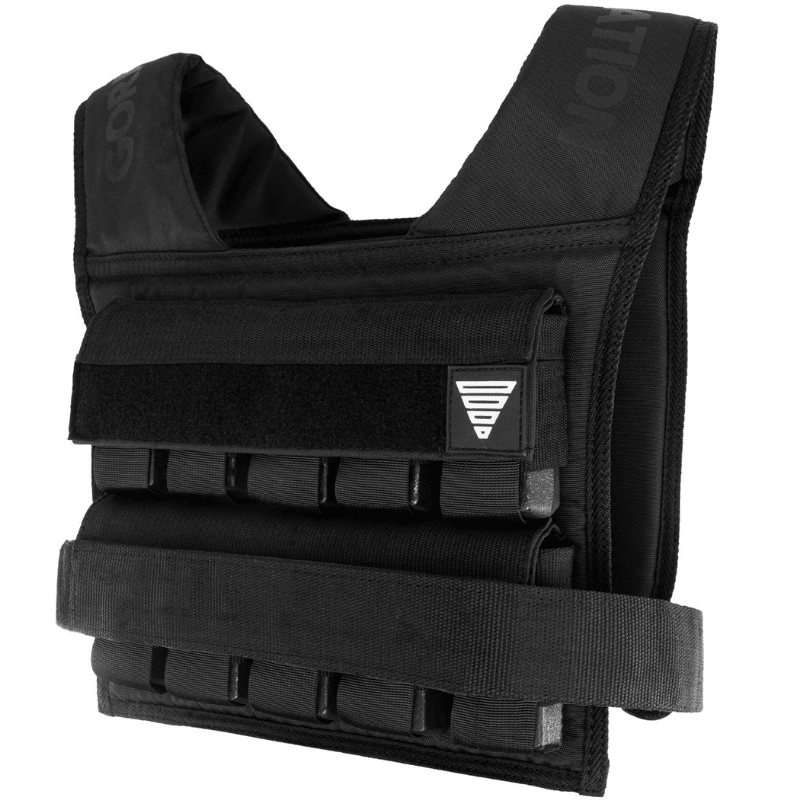
*alternative buying options:
- GORNATION (UK&EU) use code CS10 for 10% off
- Adjustable weight pouches for customizable resistance
- Evenly distributed weight for balance and comfort
- Ergonomic design with adjustable straps for a secure fit
- Ideal for running, bodyweight training, and HIIT
A weight vest or weighted vest is a specialized training accessory designed to be worn over the upper body, just like a normal vest, but it has built-in pockets for holding small weight plates. It is a popular equipment in weighted calisthenics as it has multiple benefits over a weight belt.
Pros and cons of a weighted vest
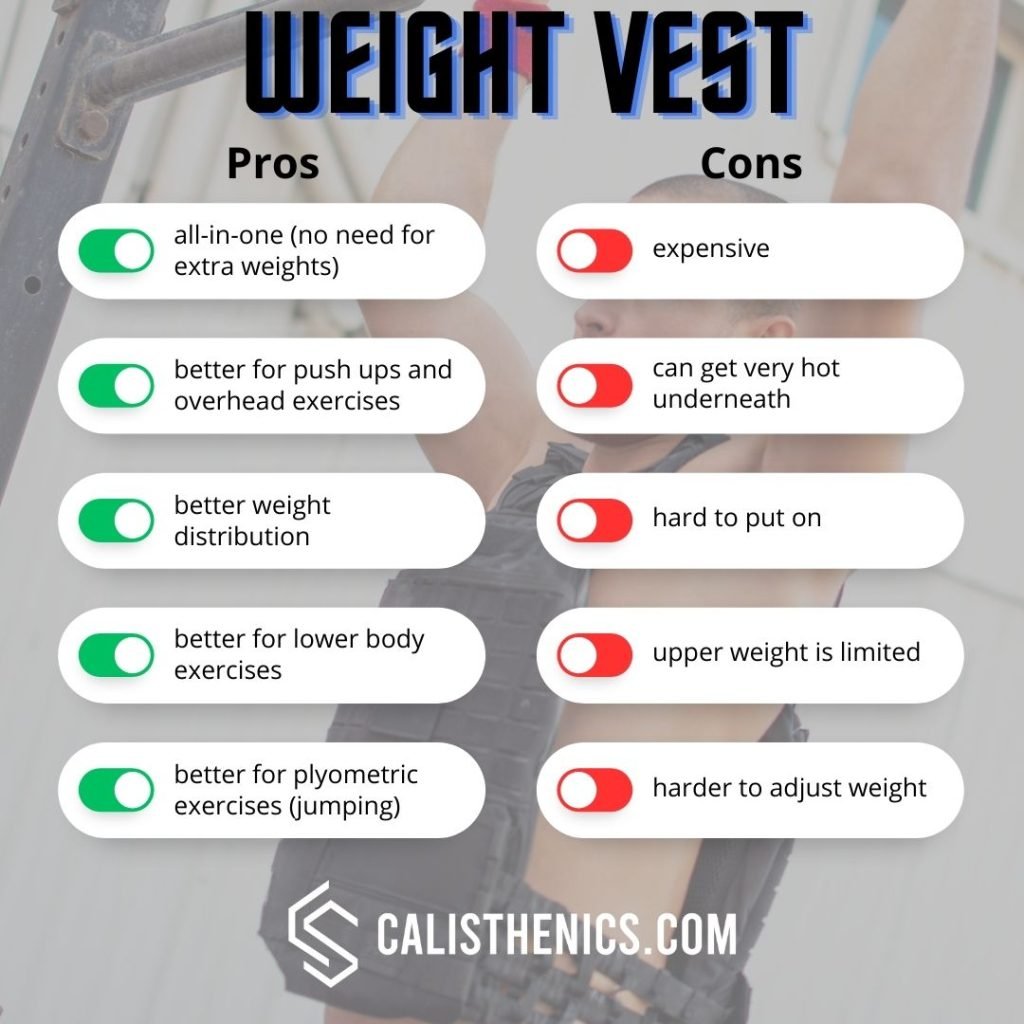
Benefits of weighted vest:
- All-in-One Solution: If one already knows the optimal resistance they want to add to their exercises and this is more or less a constant number, with a single weight vest they have a complete solution, no need for extra plates..
- Ideal for Push-Ups: Aside from a small limitation of range of motion, weight vests are great for push-ups.
- Handstand Push-Ups: Weighted vests are particularly advantageous for handstand push-ups as they stay firmly in place even when performing the exercise upside down.
- Better Lower Body Training: Weighted vests are well-suited for lower body exercises like squats and lunges, where the firmly attached position ensures uninterrupted execution..
- Optimal Weight Distribution: Weighted vests evenly distribute the added weight across the upper body, which is a big benefit compared to weight belts, especially for beginner athletes.
- Suitable for Plyometric Exercises: The fixed position of the weighted vest ensures it stays in place during dynamic and explosive movements like running and jumping, making it ideal for plyometric exercises.
Disadvantages of weighted vest:
- High Cost: Weighted vests can be relatively expensive, with prices often exceeding $100, making them a significant investment for some.
- Heat and Sweat Accumulation: Wearing a weighted vest can lead to increased body heat and sweating, especially during intense workouts, potentially causing discomfort.
- Cumbersome to Put On and Off Especially when it's a heavy version, weighted vests can be cumbersome to put on and take off, requiring extra effort and time for adjustments.
- Limited Maximum Weight: Weighted vests usually have a maximum weight limit, often capping at around 55 lbs/25 kg, which may not be sufficient for advanced athletes seeking significant strength gains.
- Fixed Weight Adjustability: Unlike weight belts, the weight on weighted vests is fixed and not easily adjustable, limiting the ability to make quick incremental changes to the resistance.
What to consider before buying a weight vest and weight belt
Both the weight vest and weight belt are an important addition to a home gym for any calisthenics athlete. They are versatile enough and complement each other in a way that justifies buying both.
If however, there is a budget limit, you have to figure out what type of workouts you are planning to do. For athletes seeking hypertrophy and strength gains, the weight belt is a necessary piece of calisthenics equipment. There is simply no better way to challenge the body for pull-ups and dips. The fact that athletes competing in Streetlifting choose a weight belt proves this point.
For athletes who just want to make their workouts more difficult but have no intention to super-optimize for strength and muscle gains the weight vest might be the better option. The weight vest is also ideal for individuals who do a lot of HIIT training and explosive exercises such as jumping and running.

